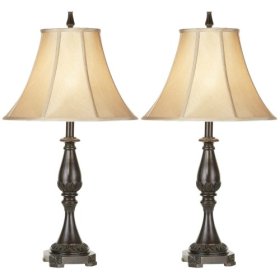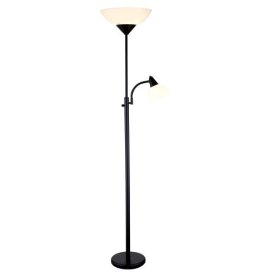Choosing the right lamp
If chosen carefully, a lamp can make a place look really special. It can significantly enhance the beauty and overall appeal of an area. These are the points that you must keep in mind while choosing a lamp.
Choose a lamp of appropriate size. On a narrow table or console, a small-sized lamp would look the best. On the other hand, a large-sized lamp would be more suitable for a bulky table.
Take into account the lamp's style. A high-tech lamp will look out of place on a carved Victorian table, while a traditional brass table lamp will not look good on a nightstand of modern design.
Take measurements to ensure that the lamp is tall enough to cast its light over your shoulder, especially from a chair-side table. The bottom of the shade should be about even with your cheekbone when you're sitting on the chair, and the light should fall on the page if you're reading.
Find out what a lamp's maximum wattage is. A reading lamp should offer 150 or more watts.Ensure that the bottom edge of the shade hides the lamp's bulb socket when the lamp is viewed from a few feet away. This will make the lamp more attractive as well as reduce the potential for glare.
Examine the shade to see whether it suits your needs. A white or off-white fabric shade usually provides a translucent quality and high light output. A darker or opaque shade will limit the light output, which is suitable in entryways.
Choosing a lamp On Sale

A handsome verde bronze finish lends these matching table lamps a wonderful visual appeal. The pair are topped by silk-look bell shades and a decorative finial. 3-way switch. Uses 150 watt bulbs (not included).
» Price : $90 USD
» Read reviews on Set of Two Bronze Classic Table Lamps
|
|
|

Features a satin steel metal pole and base, white white acrylic shades. Takes two 150 watt bulbs, measures 71" high and the base is 10". The torchiere shades measure 5" high, 14" in diameter. The reading light is 4" high and 6" in diameter.
» Price : $50 USD
» Read reviews on Adesso Piedmont Combo Torchiere
|
|
|
|